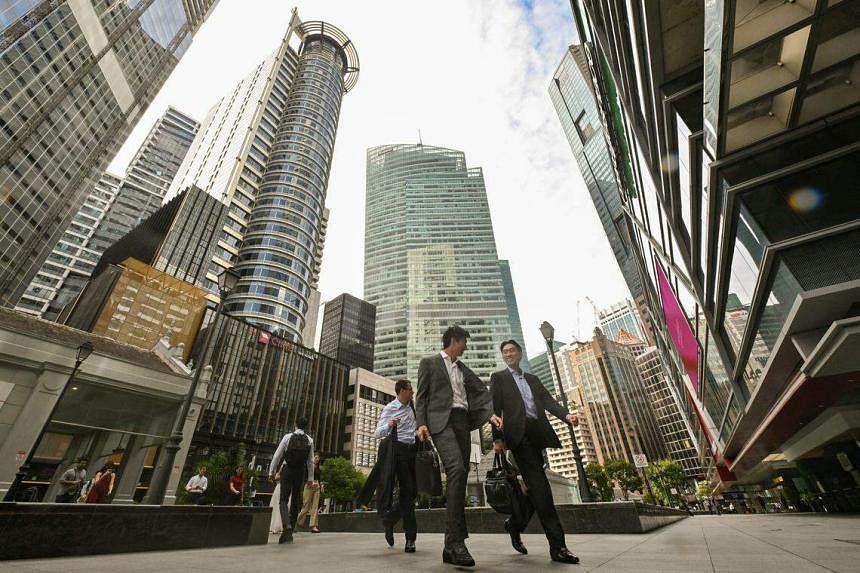SINGAPORE – Wages of Singaporeans and permanent residents (PRs) are likely to go up at a slower pace in 2023 as workers continue to enter the country and overall demand for labour softens as the economy slows.
But while wage growth is expected to ease further, it will stay above its historical average, said the Monetary Authority of Singapore (MAS) on Wednesday.
The risk is low that wages and prices will keep pushing each other higher, added the central bank, citing its studies which indicate that wages respond less than proportionately to prices in the near term.
“Nevertheless, policy and administrative factors will put a floor on the extent to which resident wage growth in certain industries eases in the near term,” said MAS in its biannual macroeconomic review.
These include policies to uplift incomes of lower-wage workers, including enhancements to the Progressive Wage Model, and salary increases in the civil service, healthcare and education sectors, which will support overall resident wage growth.
The rise in wages will also likely be uneven across sectors. It will be higher for travel-related and domestic-oriented ones like construction, real estate, retail as well as food and beverage – compared with the external-oriented types like trade and manufacturing.
The growth in real wages – factoring in the impact of inflation – will also be greater for lower-income households compared with higher-income ones amid policies aimed at raising lower-income workers’ wages, said MAS.
It also pointed to early indicators of the tight labour market easing, in line with a slowdown in the Singapore economy.
The number of employees temporarily laid off or placed on short work weeks rose while retrenchments picked up in the fourth quarter, reaching a similar level to the pre-pandemic average.
Market indicators also suggest reduced job-hopping among workers moving to higher-wage positions.
Resident wage growth slowed to 5.4 per cent year on year in the fourth quarter, down from 7.1 per cent in the third quarter.
Compared to the previous quarter and seasonally adjusted, wage growth eased to 1 per cent in the fourth quarter, cooling from 1.2 per cent in the third quarter.
“On the whole, the trajectory of resident wage growth has been broadly comparable to that of past cyclical recoveries, with wage growth gradually coming off as the recovery matures,” said MAS.
These numbers come even as total employment in 2022 as a whole expanded by 250,100, bringing the workforce to 2.9 per cent above its pre-Covid-19 level.
The resident unemployment rate declined from 2.9 per cent in September to 2.8 per cent in December, and slipped further to 2.7 per cent in the first two months of this year.
Meanwhile, the ratio of job vacancies to unemployed persons rose from 2.02 in September to 2.33 in December, reflecting a larger drop in the number of jobless workers compared with job openings.
MAS noted that while the resident unemployment rate has been low in recent quarters, it may not fully reflect employers’ difficulty in finding staff.
“The persistent skills mismatch between labour demand and the resident workforce might have arisen after the onset of Covid-19 as businesses accelerated their transition towards digital solutions such as e-commerce and work from home applications.
“The increased demand for such applications has endured, raising the need for more software developers and employees conversant with digital technologies,” it said.
Software developers and managers were among the professionals, managers, executives and technicians (PMET) in demand, going by the number of job vacancies, in 2021 to 2022. Openings also rose significantly for e-commerce-related roles such as delivery drivers.
The central bank cited surveys done in December and early this year which indicated that the pace of hiring should ease in the first half of 2023.
The employment outlook is likely to have deteriorated since then as turmoil in the international banking sector broke out after the surveys were conducted, it added.
“Employment growth in the modern services cluster, which includes information and communications and financial services, is likely to slow further in the quarters ahead amid recent stresses in the global banking system and further increases in global interest rates.
“However, the extent of net employment losses in modern services should be contained, given the strong structural demand for finance and tech professionals in Singapore,” it added.
There are bright spots from domestic-oriented and travel-related clusters, with a planned ramp-up in flights from China to Singapore helping tourist arrivals and spending to recover further.
This will boost hiring in travel-related and consumer services sectors, as well as ancillary administrative and support services, said MAS, adding that public-sector projects will also likely support the construction sector’s demand for workers.
There will also be some labour hoarding, with firms eager to hold on to workers after experiencing severe shortages in the past two years.
Job creation in the more labour-intensive domestic-oriented and travel-related clusters is expected to offset the hiring slowdown and pockets of retrenchments in the trade-related and modern services clusters.
“Thus, the aggregate resident workforce should continue expanding, albeit at a slightly more modest pace compared with last year,” said MAS.


